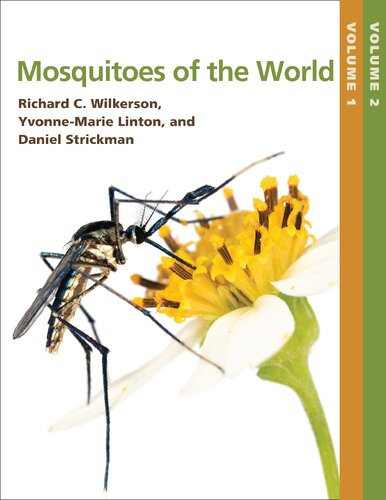

Most ebook files are in PDF format, so you can easily read them using various software such as Foxit Reader or directly on the Google Chrome browser.
Some ebook files are released by publishers in other formats such as .awz, .mobi, .epub, .fb2, etc. You may need to install specific software to read these formats on mobile/PC, such as Calibre.
Please read the tutorial at this link: https://ebookbell.com/faq
We offer FREE conversion to the popular formats you request; however, this may take some time. Therefore, right after payment, please email us, and we will try to provide the service as quickly as possible.
For some exceptional file formats or broken links (if any), please refrain from opening any disputes. Instead, email us first, and we will try to assist within a maximum of 6 hours.
EbookBell Team

5.0
108 reviewsThe definitive reference on the biology, evolution, ecology, and diversity of all known species of the world's mosquitoes. Critical for entomologists, public health professionals, and epidemiologists across the world.
Biting multiple times on two, three, or more different hosts, it is no surprise that some species of mosquitoes have co-evolved with pathogens. For humans and other animals, the result has been some of the most challenging diseases known. It has been said that Anopheles gambiae, as the primary transmitter of malaria parasites to humans, is the most dangerous animal in the world. Certainly malaria has killed more people than all the wars that ever took place. Even now, despite drugs and mosquito control, malaria claims the lives of 405,000 per year. The vast majority of mosquito species are not involved in pathogen transmission to humans, but those that are make a huge impact on global health.
In this two-volume set, three of the world's leading experts on mosquito disease, ecology, and systematics offer readers unique insights into the fascinating world of mosquitoes while illustrating their diagnostic morphological features in detail. Comprehensively addressing the natural diversity of mosquitoes, the book explains their life histories, bionomic traits, and the physiological and physical adaptations they evolved in response to ever-changing environmental conditions. Mosquitoes are one of the best-known groups of insects, making this book a great starting place for anyone who would like to understand entomology by knowing the details about a representative family.
Volume One contains a review of the biology and diversity of mosquitoes. Biology is treated in the following chapters:
• Evolution
• Nomenclature
• Distribution
• Development
• Dormancy
• Mosquito Movement
• Feeding and Nutrition
• Excretion
• Copulation and Insemination
• Egg Development and Oviposition
The chapters on biology are followed by a well-illustrated summary of the characteristics of all 41 genera and of representative species of mosquitoes. This treatment of the morphological diversity of mosquitoes is accompanied by a glossary of all morphological terms used.
Volume Two features
• a long-awaited comprehensive mosquito taxonomic catalog detailing the current taxonomic and systematic status of all 3,698 valid species and subspecies, 41 genera, and 187 subgenera
• a list of all taxa for definitive use of nomenclature
• complete lists of species synonyms, distributions, key taxonomic works, and newly defined informal names
• origins of scientific names
Readers will discover that some mosquitoes undertake courtship rituals, while others guard their eggs, feed solely on earthworms, or can survive as immatures under ice sheets or in salt-encrusted pools. Hundreds of drawings and high-resolution, close-up images illustrate the text. The most complete reference work on mosquitoes ever produced, Mosquitoes of the World is an unmatched resource for entomologists, public health professionals, epidemiologists, and reference libraries.